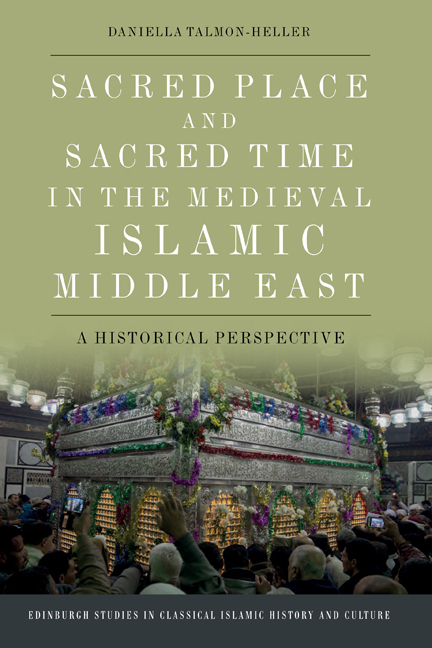Book contents
- Frontmatter
- Contents
- List of Figures
- Acknowledgements
- Map of the Middle East
- Introduction
- 1 Etic Concepts and Emic Terms
- 2 The State of the Art
- Part One A Sacred Place: The Shrine of al-Husayn’s Head
- Part Two A Sacred Time: The Month of Rajab
- Final Comments: Spacial and Temporal Sanctity
- Works Cited
- Index
2 - The State of the Art
Published online by Cambridge University Press: 17 October 2020
- Frontmatter
- Contents
- List of Figures
- Acknowledgements
- Map of the Middle East
- Introduction
- 1 Etic Concepts and Emic Terms
- 2 The State of the Art
- Part One A Sacred Place: The Shrine of al-Husayn’s Head
- Part Two A Sacred Time: The Month of Rajab
- Final Comments: Spacial and Temporal Sanctity
- Works Cited
- Index
Summary
The veneration of saints and pilgrimage to their shrines – one of the concerns of this book – has been at the centre of a number of works since Goldziher's pioneering study of 1911. Gustave von Grunebaum explored the sacrality of Islamic cities (1962), suggesting a typology of Muslim holy places arranged in hierarchical order: localities whose sanctity stems from the blessing (baraka) of a tomb of a prophet or a saint, or the erstwhile presence of descendants of Muhammad or religious sages; a location that is destined to play a role at the end of days; and a place of cosmological import (determined by the order of creation or the site's proximity to heaven). Von Grunebaum emphasises that those sources of sanctity are in no way mutually exclusive and that combinations between them give rise to various cults. We will return to those typologies in our discussion of Ascalon and its surroundings.
Cohen's typology of pilgrimage centres, described above, suggests a useful middle ground between the models of Eliade and Turner. I find it especially helpful for the characterisation of a shrine's different historical phases on the spectrum between ‘central’ vs ‘peripheral’, and ‘formal’ vs ‘popular’ (with all the problematics that these terms carry), enabling us to avoid unwarranted dichotomies and to be more sensitive to variability.
The ‘spatial turn’ of the 1990s in geography, anthropology, sociology and the study of religion – and to a lesser extent, in Islamic studies and Middle Eastern history, too – has nurtured endless discussions on place and space as social constructs, rather than simply ‘locations’. An awareness that a single place may have multiple meanings for different ‘users’ based, among other characteristics, on their gender and position in the social hierarchy was articulated by Margaret Rodman (1992). In 2010, Kim Knott identified two major tendencies in the scholarship on religion and space: one focusing on the pilgrim's embodied experience in their place of destiny (including the ‘poetics’ and aesthetics of the sacred place); the other, focusing on the representation and production of sacred space, as well as practice therein, as expressions of knowledge and power.
- Type
- Chapter
- Information
- Sacred Place and Sacred Time in the Medieval Islamic Middle EastA Historical Perspective, pp. 17 - 24Publisher: Edinburgh University PressPrint publication year: 2020



